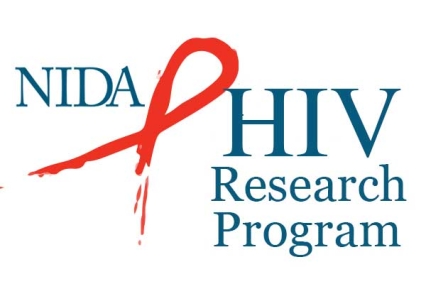
For decades, a significant portion of NIDA’s research portfolio has funded science at the intersection of substance use and HIV, due to the intertwined nature of these two health conditions. Sharing of injection equipment is a major mode of viral transmission, and many kinds of substance use increase the likelihood of engaging in unprotected high-risk sex. Research demonstrates substance use disorders (SUDs) exacerbate the effects of HIV in the body, reduce the effectiveness of anti-retroviral therapy, serve as a barrier to prevention and treatment access, impede care-seeking, and decrease the likelihood of retention in treatment.
NIDA’s portfolio of HIV-related research is the second largest at NIH (after the National Institute of Allergy and Infectious Diseases), and it is diverse, ranging from basic science to implementation research. NIDA created its AIDS Research Program (ARP) in 2004 to coordinate this research across our Institute and to encourage transformative science addressing SUD and HIV. Now, to better characterize our scientific investment as we move into the third decade of the century and to help combat the stigma that still attaches to HIV, we have decided to rename this office the HIV Research Program. It is a change of name but not of mission.
Much has changed in the landscape of HIV and HIV research since the ARP was founded. AIDS describes the often-fatal condition of severe damage to the immune system caused by untreated HIV, but thanks to antiretroviral treatments, most people with HIV in the U.S. do not develop AIDS. Consequently, NIDA research now focuses on the virus itself and the many ways it continues to intertwine with drug use and addiction. Today, it is more accurate to say NIDA’s research focuses on HIV, not AIDS.
The name change also better aligns our Institute with the desire of patients, families, and communities to use less stigmatizing language. The term AIDS can evoke the haunting images from the early days of the HIV pandemic, when there was no treatment, there were few prevention options, and too many people succumbed to extreme illness. Antiretroviral medications developed in the late 1990s turned HIV from what had been a fatal disease into a manageable and livable condition, and we now know they can also prevent transmission of HIV.
While the reality for many people living with HIV has moved beyond the images of an earlier era, AIDS activism played a key role in scientific and societal advancements over the last 40 years. HIV/AIDS activists revolutionized the concept of disease advocacy, informing and improving the work of governments, scientists, medicine, and industry in the United States and globally. The progress we make today honors those contributions.
The scientific advances over the past two decades have been instrumental in reducing the stigma of HIV, but we still have a long way to go in eliminating that stigma. The stigma of HIV intersects with that of substance use disorders, still among the most stigmatized of health conditions. For both HIV and addiction, advocates have emphasized how important it is to underscore that medications and other treatments allow people to lead vibrant, long, and otherwise healthy lives. Nor do either HIV or an SUD need to define the individual.
NIDA’s investment in HIV research has advanced the science in significant ways. For instance, over a decade ago we supported the seminal study showing that treatment of HIV in people who inject drugs is prevention, reducing transmission in the community and community-level viral load. NIDA also funded a phase 3 trial showing that medication treatment for opioid use disorder improves viral load, infection-fighting CD4 cell count, and HIV treatment retention and is thus vital in HIV care. Recently another study conducted through NIDA’s Clinical Trials Network demonstrated the successful integration of HIV testing into SUD treatment.
Though the program’s name is changing, NIDA’s commitment to HIV research, its HIV budget, and its HIV research priorities are not. We will continue to support a wide range of studies, from the basic science of HIV pathogenesis and the immune response in the presence of addictive substances to research on feasibility and acceptability of new pre-exposure prophylaxis (PrEP) products among people who use drugs. NIDA-funded scientists are also now investigating the intersections of SUD, HIV, racial inequity, and COVID-19, as well as contributing to the effort to develop an HIV vaccine.
I am proud of the accomplishments of the office now called the HIV Research Program, under the capable leadership of Dr. Redonna Chandler and with the help of Dr. Vasundhara Varthakavi. I look forward to many more years of cutting-edge research with the aim of developing and implementing effective prevention and treatment interventions for HIV and SUDs and eliminating HIV transmission among people who use drugs.
